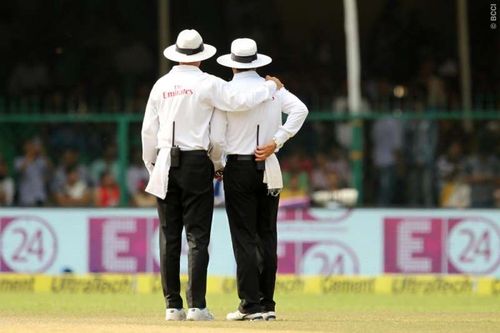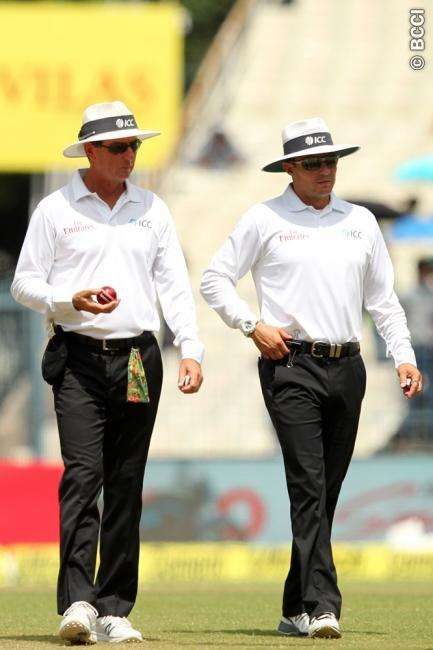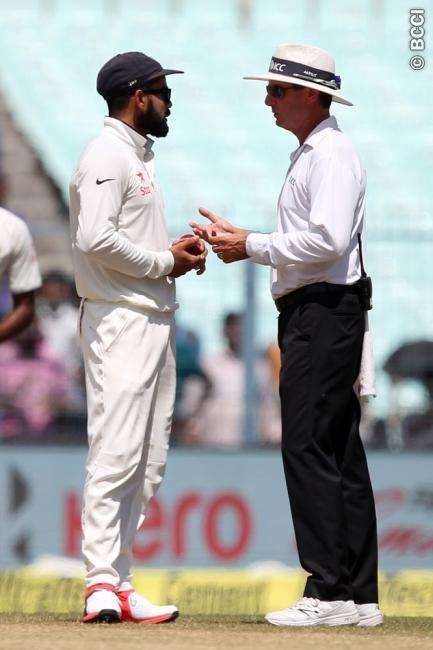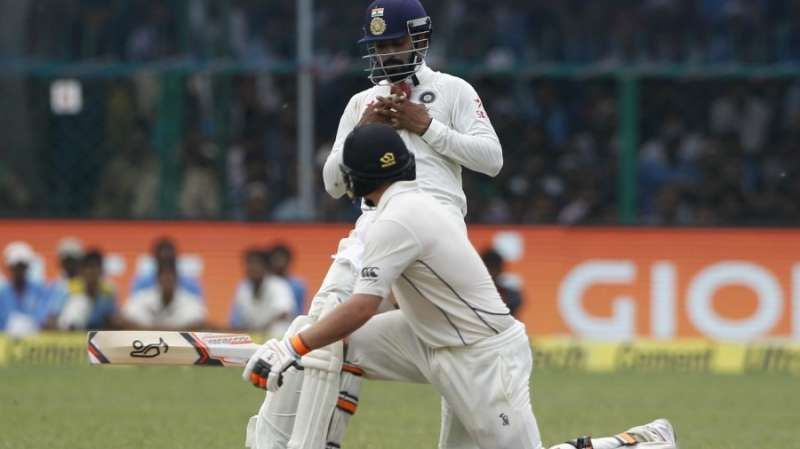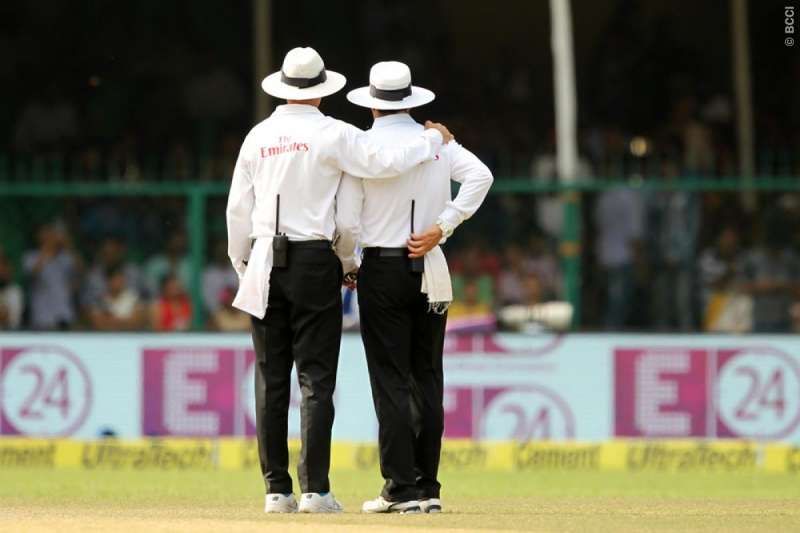
Umpires come to the fore in the India vs New Zealand series
Umpiring is the second most thankless job in cricket after that of a wicket-keeper. When a wicket-keeper drops a catch or misses a stumping, all the good work that he had done till then will be forgotten and the only thing that remains in the minds of people is the mistake.
Just like that, people more often than not, tend to remember just the errors that the match officials make and the good decisions are forgotten.
The challenges that umpires face
Umpiring, in cricket, is one of the most challenging tasks to perform. The concentration levels required need to be of the highest level. The match officials are required to stay in the game at all times, have to monitor the players, the condition of various other things ranging from the shape of the cricket ball to the pitch and weather.
Starting from the bowler’s run-up, they have to be on the top of their games.
The two cannot let their guard down for a single second and the pressure on the officials is huge throughout the duration of a match.
Umpires in this series
The difficulty of officiating has been no different for umpires Rod Tucker and Richard Kettleborough in the ongoing Test series between India and New Zealand.
Australian Rod Tucker is a veteran of 49 Tests and 43-year old Englishman Kettleborough has officiated in 39 Tests. Both made their Test match umpiring debuts in 2010 and have gone on to make huge strides in their careers as umpires.
Tucker was inducted quickly into the ICC Elite Umpires Panel in 2010 and has gone on to officiate the 2015 World Cup semi-final between South Africa and New Zealand and also stood as umpire in the 2016 T20 World Cup final.
Also Read: What is the role of fourth umpire in cricket?
Richard Kettleborough was made a part of the Elite Panel in 2011 and two years later, in 2013, he was decorated with the ICC Umpire of the Year award. In his impressive career, he has officiated some high profile matches – the final of 2015 World Cup being one of them.
Umpiring in this series
The conditions here in India have been tricky with the ball turning prodigiously in Kanpur and the Kolkata wicket offering varying bounce throughout. The two umpires were up against it from the word go, as bowlers from both teams made the best use of the conditions at hand.
And the umpires, for the most part, have been on top of their game, making some excellent decisions through the series.
In the two Test matches at Kanpur and Kolkata, there have been a combined 26 LBW dismissals. Questions have been asked of these two officials at every step, especially by the Indian spinners, and barring one or two errors, they have hardly put a foot wrong.
Take Shikhar Dhawan’s dismissal in the second innings of the Kolkata Test off a Trent Boult delivery. The ball nipped in after pitching and Dhawan was hit on the pads before the ball made contact with the bat. The Kiwis appealed for LBW and Rod Tucker raised his finger as India were reduced to 34 for 3.
Also Read: Top 5 umpires in ICC Elite Panel 2016-17
It was almost indiscernible in real-time, if the ball hit the bat first or the pad. But on watching replays, it was clear that the 52-year-old Australian had got the decision right. It was an excellent piece of officiating under pressure by Tucker.
There have been some mistakes made, no doubt. For example, much to the Indians chagrin, Martin Guptill was given not out after he was caught plumb by Mohammad Shami on the fourth day. Umpire Tucker felt there was an inside edge, but on the evidence of TV replays and the aid of snicko-meter, no contact with the bat was detected.
Soon enough, though, the Kiwi opener was dismissed by R Ashwin, with umpire Kettleborough making another excellent decision as the ball hit just in line of off stump.
On the rain-affected Day 2 at Kolkata, the officials, with the help of some excellent work by the groundsmen made sure not much time was wasted as they worked to get the play started at the earliest possible.
KL Rahul’s catch which was deemed unfair
Another key decision that indicated the degree of excellence of the match officials was the helmet incident involving KL Rahul in the first Test match. Tom Latham tried to play a sweep off Jadeja, but the ball ricocheted off his shoes and went to Rahul at forward short leg who juggled the ball but managed to catch it eventually.
The Indians went up in unison and were convinced that the batsman was out.
Also Read: Top 5 controversial cricket umpires of all time
But the man who mattered, the umpire, Richard Kettleborough, apparently was not. He went to his partner on the field, and after some deliberation, he decided to go to the TV umpire for assistance. The soft signal from him was that of not-out.
Surely, he must’ve seen something everyone else seemed to have completely missed. And as it turned out, he had. The ball, before Rahul had it in his control, had managed to touch the grill of his protective helmet, which makes the catch ‘not fair’ as per the rules of the game.
Umpire Kettleborough had spotted this violation and had indicated the same to the TV umpire and the decision was adjudged as not-out. Another evidence of the supreme officiating on display.
The umpires are always under pressure to make the right calls in real-time without any help of TV replays. They deserve great credit because they do the hardest of jobs and do it to an amazing level of excellence and with consistency.
The India vs New Zealand series has been a highly-entertaining one and the unmatchable expertise of the match officials at hand has just added to the value of the contests.
The two men in white and black have made sure the matches have been played within the spirits of the game and made some brilliant decisions throughout and are deserving of the plaudits coming their way.
